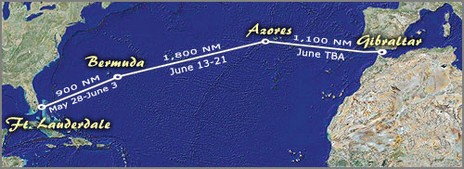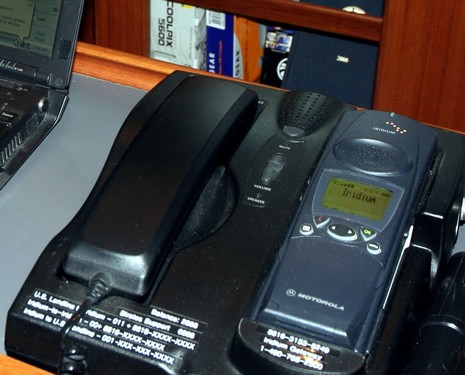Milt, from mid Atlantic

I’m way behind on work, not to mention the gizmo preparation, that needs doing before Bermuda (wow, Bill and Gram were fifth over the line and third in class corrected), so I’m turning it over to Milt Baker. These snippets are from today’s noon report, filed from almost the midpoint of the Med Bound 2007 Bermuda-Azores leg:
Ships are few and far between out here. We nearly always pick them up on AIS before seeing them on radar. Moana Kuewa (which has the same Furuno FA-150 AIS unit we have) clearly has the best installation {not trivial} and picks up the ships first every time, sometimes as much as 20-30 minutes before they show up on the AIS units aboard Salty Dawg and Bluewater.
Chris has her watchstanders well trained, and they’re always the first to report a contact to the other two yachts. We see an average of one or two ships per day, though yesterday we had three converging on us at once. Night before last I asked one, overtaking us on the starboard side, to alter course to give our group a two-mile CPA. The watch officer responded cheerfully in accented English, immediately began a minor course change to starboard, and wished me a good watch and a good evening. My experience has been that other ships are quick to comply when I come up on the radio and ask for course change giving us “a safe CPA of two miles or more.” Part of the deal, I believe, is being proactive: take the initiative, tell the other guy what you want, be polite, and use proper radio procedure and terminology. Of course, I never ask for a course change unless we have the right of way. {Note that calling a ship is much easier if you have its name and call sign from AIS}.

One resource I am beginning to use again is Ocens’ WeatherNet. We used this while cruising in the lower Caribbean last year, but the software is not exactly intuitive; after being away from it for a few months, I’ve had to re-learn it. My re-education process is coming along nicely, and I can now select the weather “products” I want and download them via satellite phone—the same system we use for e-mail. {Iridium, seen above; don’t you love how Milt labels everything!} Thousands of weather products are available, a bewildering array. One especially interesting product comes from a Navy (FNMOC) site via WeatherNet and shows ocean currents; it’s derived from satellite data and the one this morning showed a persistent current of .7 to .9 knots against us for the past 150 miles or so. Hmmm. I’ve also downloaded the next 72 hours forecast for wind, waves and surface pressure charts shown in 6-hour increments—it’s very nice to play them sequentially and watch the changes coming. The cost of these charts is about $5.00 a day, plus the satellite time to download them—another $5.00 or so. If you are into offshore passage making, my recommendation is to take a look at WeatherNet and its companion program, Grib Explorer. But be sure to learn how to use it while you have a fast Internet connection, something I failed to do!
WeatherNet used to offer Associated Press headline news, but, alas, they discontinued that, they say, due to lack of interest. So here we are nearly a week out of Bermuda with little idea what in the world is going on. If we were truly interested, we could turn on the SSB and listen to Voice of America or the BBC. The truth is we’d rather read. Does anyone know of a good e-mail resource that will e-mail a short, text-only daily new summary?
Can anyone help Milt with that request? Meanwhile, an Iridium loaner, with data set up and external antenna, literally just showed up here at HQ. Must prepare.

 Share
Share
Milt,
Any of the major newspapers can offer personalized headlines in text only format. Here is a link to BBC's offering: http://newsvote.bbc.co.uk/email/news Following the registration link to the New York Times also allows for this type of service.
-Eli